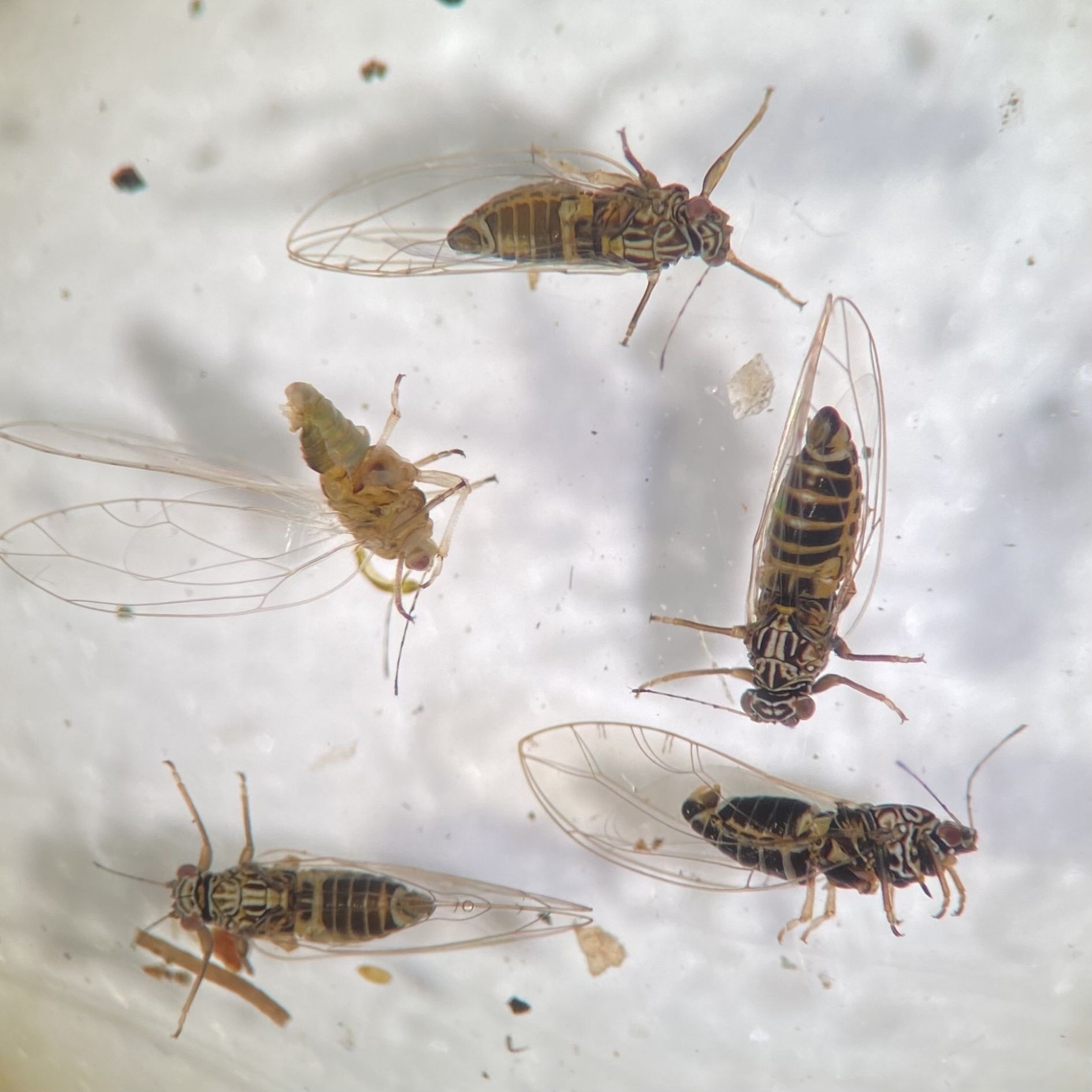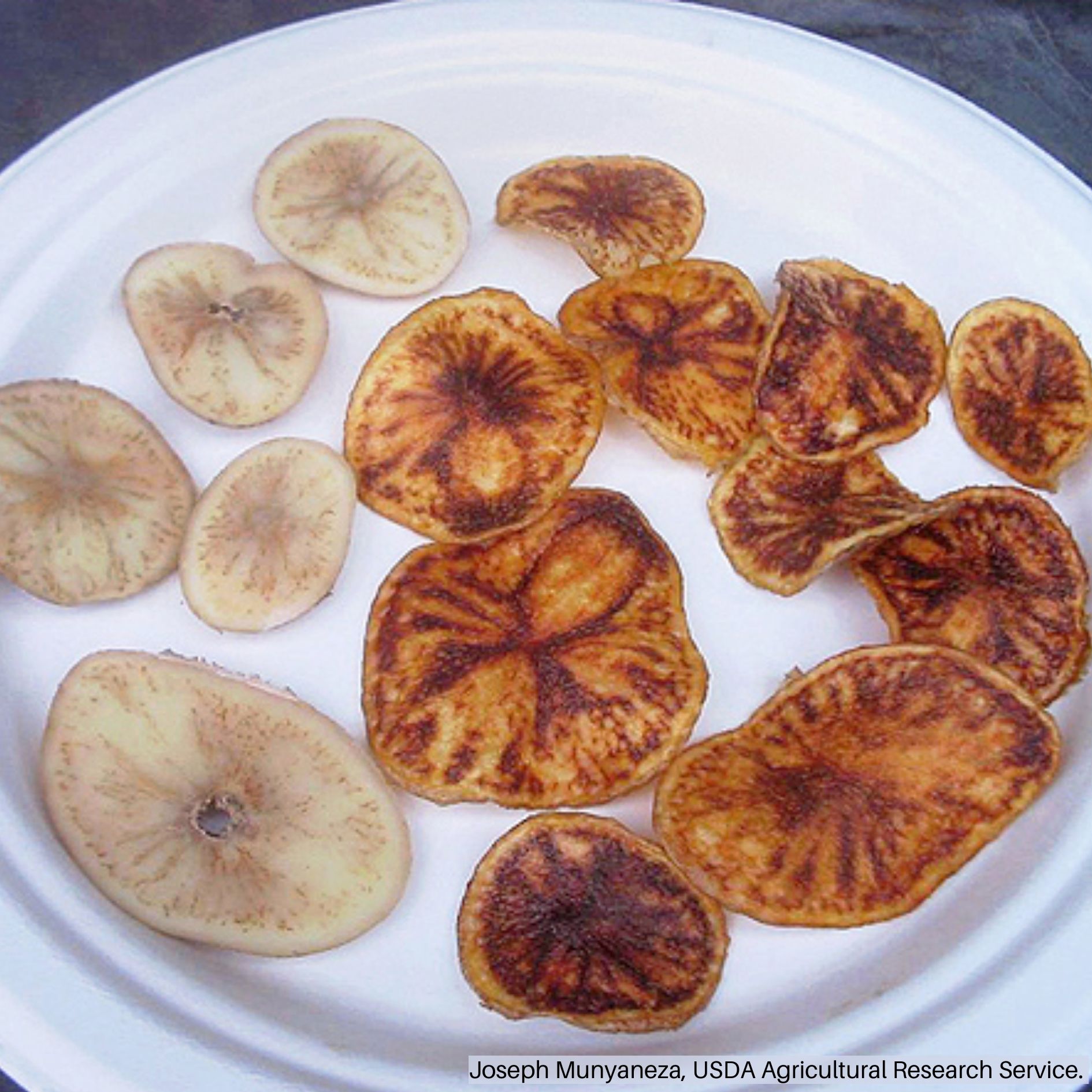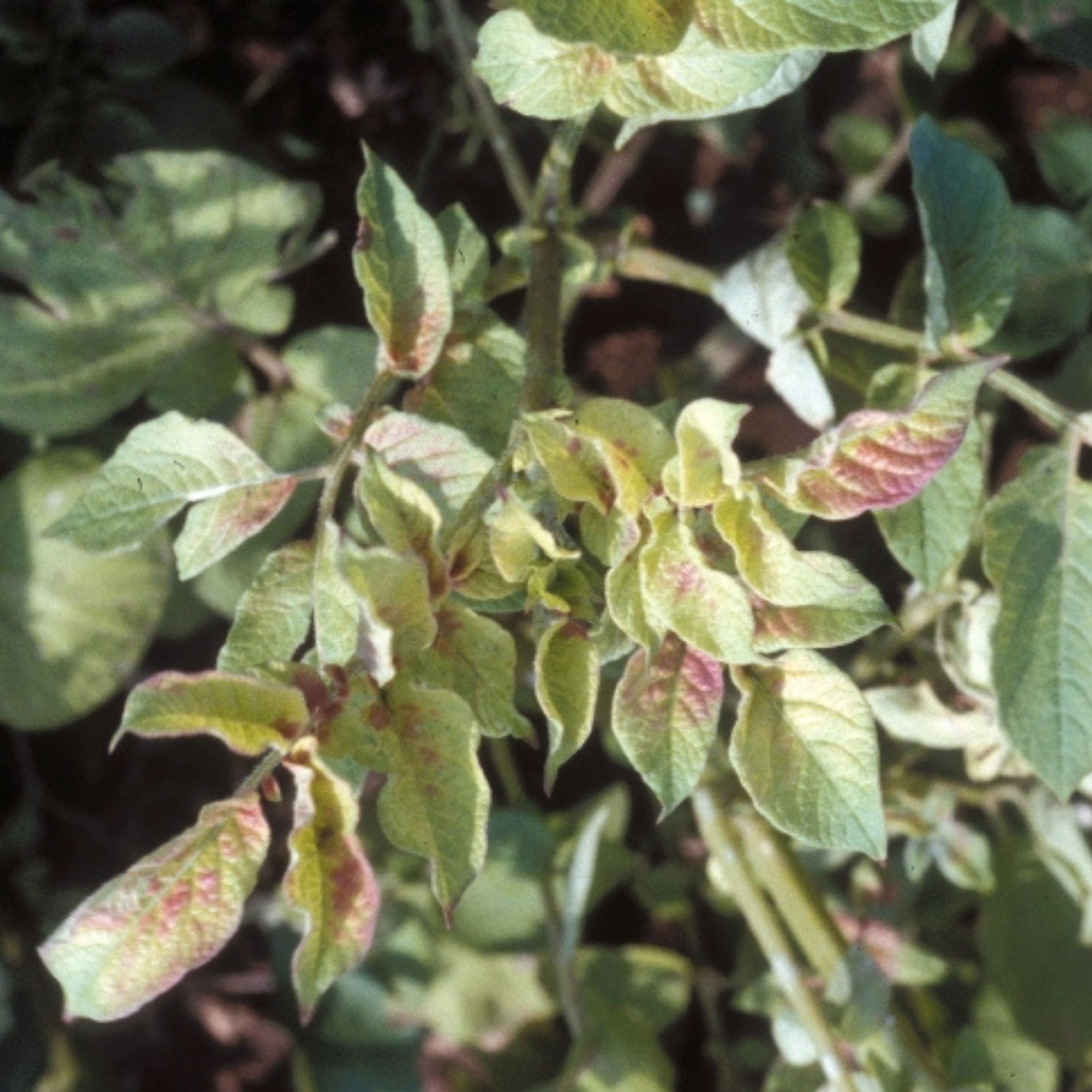Zebra Chip Disease
HOSTS
- Potato
- Solanaceae Crops
BIOLOGY
Zebra chip disease (Candidatus Liberibacter solanacearum) is a concern throughout the growing season.
- Infection occurs when disease carrying potato psyllids feed on healthy plants.
- Overwinters in potato psyllids which overwinter in warmer locations.
SYMPTOMS
Above-ground symptoms include yellowing and a pink-reddish discoloration of the foliage, and brown striations on sliced potato tubers (even more pronounced when fried).
GENERAL MANAGEMENT
The disease occurs across Utah but infection levels vary from year to year. The disease tends to be more common in areas that had it in the past.
- Symptoms on potato can go unnoticed until the potato tubers are sliced. Foliar symptoms are often visible but mistaken for nutrient deficiency.
- Scout for potato psyllids using yellow sticky cards starting early in the season
- Inspect undersides of host leaves for the presence of psyllid nymphs.
- Monitor areas that have had the disease in the past.
- Control psyllids early in the season.
- Remove infected plants.
- Application of insecticides; early in the season to control potato psyllids.
Precautionary Statement: Utah State University and its employees are not responsible for the use, misuse, or damage caused by application or misapplication of products or information mentioned in this document. All pesticides are labeled with ingredients, instructions, and risks, and not all are registered for edible crops. “Restricted use” pesticides may only be applied by a licensed applicator. The pesticide applicator is legally responsible for proper use. USU makes no endorsement of the products listed in this publication.





